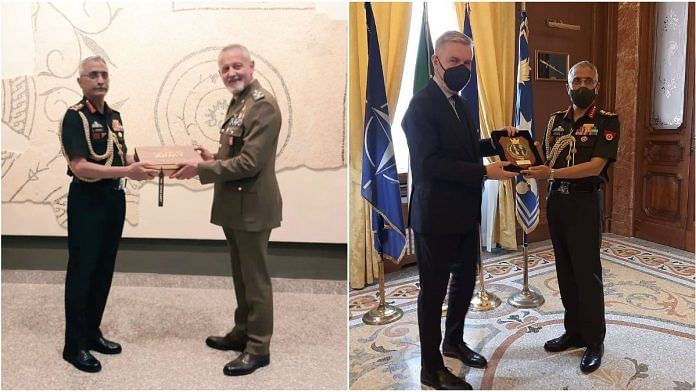On 8 July, the Chief of Army Staff, General M.M. Naravane, inaugurated the Indian Army Memorial at Cassino, Italy, to commemorate the Indian soldiers killed in action during the Battle of Cassino, January-May 1944.
In 1975, while hitchhiking in Italy, I spent two days studying one of the bloodiest battles of the Second World War, fought around Monte Cassino. While the Commonwealth War Cemetery and Memorial at Cassino acknowledged the contribution of Indian soldiers, it is heartening to note that now a dedicated war memorial has been constructed by India.
The Battle of Monte Cassino (1944) had four distinct battles — 12 January to 9 February, 15 to 18 February, 19 to 23 March and 11 May to 5 June. India’s 4th Infantry Division was part of the second and third battles.
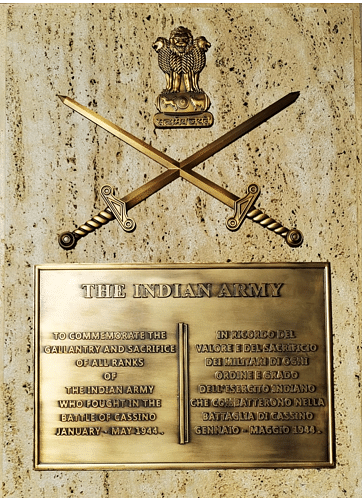
Also read: World War 2 spy Noor Inayat Khan first Indian origin woman to get UK memorial plaque
The backdrop
Monte Cassino was the lynchpin of the Gustav Line constructed by the Germans to defend Italy. Though the height of Monte Cassino is only 1,700 feet, the ruggedness of the terrain is at par with the middle Himalayas. The broken terrain and fast-flowing rivers to the east and west made the Gustav Line defences very formidable.
The Allies invaded mainland Italy in September 1943 with the 15 Army Group — 5th US Army and 8th British Army — under General Harold Alexander. They advanced northwards on two thrust lines on either side of the main mountain range – the “spine” of Italy. On the western front, the 5th US Army under Lt Gen Mark W. Clark advanced from the main base at Naples up the Italian “boot”, and on the eastern front, the 8th British Army, under the famous General Sir Bernard Montgomery, advanced along the Adriatic Sea coast.
Due to the rugged terrain, flooded rivers and the severe winter weather, both the armies came to a grinding halt at the Gustav Line by the end of December 1943. Because of the terrain compulsions, the group gave up the eastern front for advancing to Rome and the focus shifted entirely to the western front.
Also read: Moving towards darkest hour of coronavirus, India can take strength from WW2’s Dunkirk moment
The Gustav Line
The Winter Line was a series of successive Axis defence fortifications, 125 km-150 km long, running across the width of southeastern Italy.
The main defences were based on the Gustav Line that ran across Italy from Tyrrhenian Sea north of the Garigliano River through the Apennine Mountains to the mouth of the Sangro River on the Adriatic Sea coast in the east. It had two subsidiary lines, the Bernhardt Line and the Hitler Line.
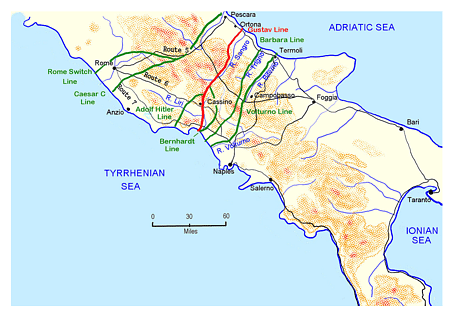
The Gustav line defended the main route to Rome, passing through the Liri River Valley. Its fulcrum was at Monte Cassino, on which stood the Benedictine Abbey, established in 529 AD. The Aurunci Mountains near the coast made the Liri Valley a bottleneck. Monte Cassino dominated the terrain and the routes to Rome, and around it the bloody protracted battles were waged for five months which compared in their intensity and horror with the battles of the Western Front in the First World War.
In September 1943, Italy had surrendered and the Germans had taken over the country. The troops defending the Gustav Line were battle hardened in North Africa and Tunisia. The commander of all German forces in the Mediterranean theatre since 1941, and now responsible for the defence of Italy, was the renowned Field Marshal Albert Kesselring, a Luftwaffe General. XIV Panzer Corps was defending the Gustav Line.
Also read: The British used ‘low-caste’ Indian soldiers only when WWI intensified, rejected them after
First battle of Cassino: 12 January-9 February 1944
US 5th Army was responsible for the attack on the main defences of Gustav Line with 10 British Corps on the west, 2 US Corps attacking through Liri Valley and on to Monte Cassino. Further east was the French Expeditionary Corps, to outflank Monte Cassino. 6 US Corps was to carry out an amphibious landing at Anzio further north on 22 January, to outflank the main defences.
After closing in with the main defences, the first attack was launched on 17 January by the British 10 Corps forcing a crossing of the Garigliano River. Germany’s 94th Infantry Division was under severe pressure to hold the line and application of reserves would have carried the day. Kesselring ordered the 29th and 90th Panzergrenadier Divisions from the Rome area to provide reinforcements, which stabilised the front by 21 January. The three divisions of 10 Corps sustained 4,000 killed/wounded in the first battle. Sepoy Kamal Ram of 3/8 Punjab Regiment was awarded the Victoria Cross.
The main attack of 2 Corps in the Liri Valley and towards Monte Cassino commenced on 20 January. The attack across the Gari river by 36 US Infantry Division was broken up by counter-attacks of the famous 15 Panzer Division. In 48 hours, the US division suffered 2,100 killed/wounded. 34 US Division attacked north of Cassino across the Rapido River. After eight days of grim fighting, it managed to get a foothold on the mountains to the north and east of Monte Cassino, pushing back 44 German Infantry Division. On the right flank the French Expeditionary Corps suffered 2100 casualties.
After nearly one month of fighting a grim battle, the battered 2 US Corps was taken out of the line in the area of Monte Cassino and replaced with the New Zealand Corps — 2 New Zealand Division and 4 Indian Infantry Division. The successful Anzio amphibious landings on 22 January could not make much progress towards Rome or put pressure on the Gustav Line in face of determined German counter-attacks and application of reserves to contain the bridgehead.
Also read: When India sent scores of prisoners to Iraq as sweepers during World War I
Second Battle of Cassino: 15-18 February 1944
The New Zealand Corps was to capture Monte Cassino, using the firm base in the mountains secured by 34 US Infantry Division. A two-pronged attack was planned. 4 Indian Infantry Division was to attack from the north to capture Monte Cassino and the New Zealand Division was to attack to capture Cassino railway station and the town.
As a prelude to the battle, a controversial decision by the Allies led to the destruction of the sixth-century Benedictine Abbey in one of the biggest bombing raids of the war on 15 February. The Abbey was never occupied by the Germans. However, its 50-foot high walls symbolised a “defensive fortress”. The result was counter-productive as Germany’s 1st Parachute Division occupied the ruins and converted it into a fortress. Poor coordination led to delay in launching the attack.
New Zealand Corps’ plan of attack, 17–18 Feb 1944
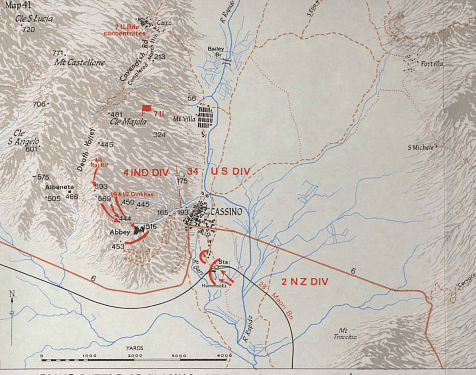
The attack on Monte Cassino from the north was launched by the 7th Indian Infantry Brigade on the night of 17-18 February. The terrain was treacherous and heavily mined with German S-mines that jumped three feet in the air once activated to cause heavy casualties. Well-coordinated German machine guns too covered the area. The attack petered out by morning with marginal gains.
On the same night, at Cassino, 28 Maori Battalion of 2nd New Zealand Division attacked and captured the Cassino railway station. However, the tanks could not link up. The Maori Battalion was routed by a counter-attack, losing 124 (killed or wounded) of the 200 that attacked.
After 24 hours of heavy fighting, the attack was stalled and cost the 4 Indian Infantry Division 590 casualties and the New Zealand Division 226. Unknown to the Allies, the German defenders had suffered 4,470 casualties in the first three weeks of February 1944 and were in no position to repel another attack if pressed home.
Also read: Politicise all you want, but Indian soldiers don’t fight in the name of nationalism alone
Third Battle of Cassino: 19 February-23 March
Wet weather and extreme cold conditions delayed the third battle until 15 March. This time, the New Zealand Corps attacked Cassino from the north with the Indian troops again attacking Monte Cassino, and the New Zealand troops attacking the town.
The town was flattened by intensive aerial bombing, followed by an artillery bombardment of over 1,000 guns. Ironically, the monastery on top was not targeted. The bombing devastated the Axis defenders but it created equal problems for the Allied attackers who had difficulty bringing their tanks forward. Vicious house-to-house fighting took place in the ruins of Cassino with often the same building being occupied by both sides.
Progress made by New Zealand Corps on 15 March 1944
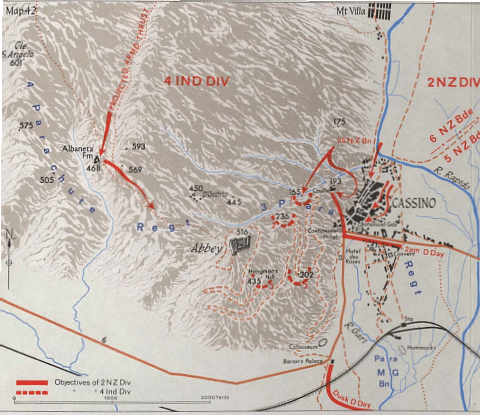
Around the monastery, exceptional bravery was displayed by the troops of 1/9 Gurkhas, 1/2 Gurkhas, 1/4 Essex and the 4/5 Rajputana Rifles who had fought their way forward and held Hangman’s Hill and number of other features to the east of Monte Cassino. The tenacious German defence was stretched to the limit but held on and no further progress was made. The third attempt to break through at Cassino had also been stalled.
Also read: The British were so impressed by Indian WWI aviators that they gave India its own Air Force
Fourth battle of Cassino: 11 May – 5 June
The fourth and final battle of Cassino — Operation Diadem — was coordinated at the Army Group level with overwhelming resources. The 8th British Army was to attack through the Liri Valley, 5th US Army along the coast and the Polish Corps was to attack Monte Cassino. Reinforced 6th US Corps would break out from the Anzio bridgehead to get behind the Gustav Line.
The attack began at 1100 hours on 11 May with a massive artillery barrage along the entire front. Eighth divisions simultaneously launched the attack and fought their way forward against stubborn German defence. Over the next six days, one of the heaviest fighting of World War 2 took place. The Gustav Line was breached all along the front with combined arms attacks.
Operation DIADEM: Polish Corps’ plan
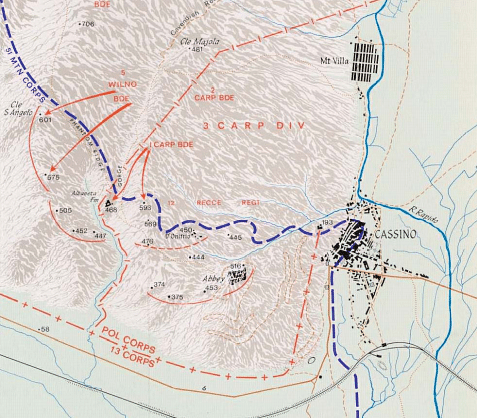
At Monte Cassino and mountains to the north, Major General Richard Heidrich’s German paratroopers grimly held on against attacks by the Polish Corps. The final attack was launched on 16 May. Savage fighting took place with the battle-hardened German paratroopers determined to hold on to “their Monte Cassino”. However, with Gustav Line having been breached in the Liri Valley and break out from Anzio threatened to cut routes of withdrawal, the defenders slipped away on 17 May.
The four battles of Cassino cost 55,000 Allied casualties, with German losses estimated at around 20,000 killed and wounded. Indian troops are held in very high regard in Italy. The Indian Army Memorial at Cassino is indeed a befitting tribute to the bravery and chivalry of the Indian soldiers.
Lt Gen H S Panag PVSM, AVSM (R) served in the Indian Army for 40 years. He was GOC in C Northern Command and Central Command. Post retirement, he was Member of Armed Forces Tribunal. He tweets @rwac48. Views are personal.
(Edited by Anurag Chaubey)


